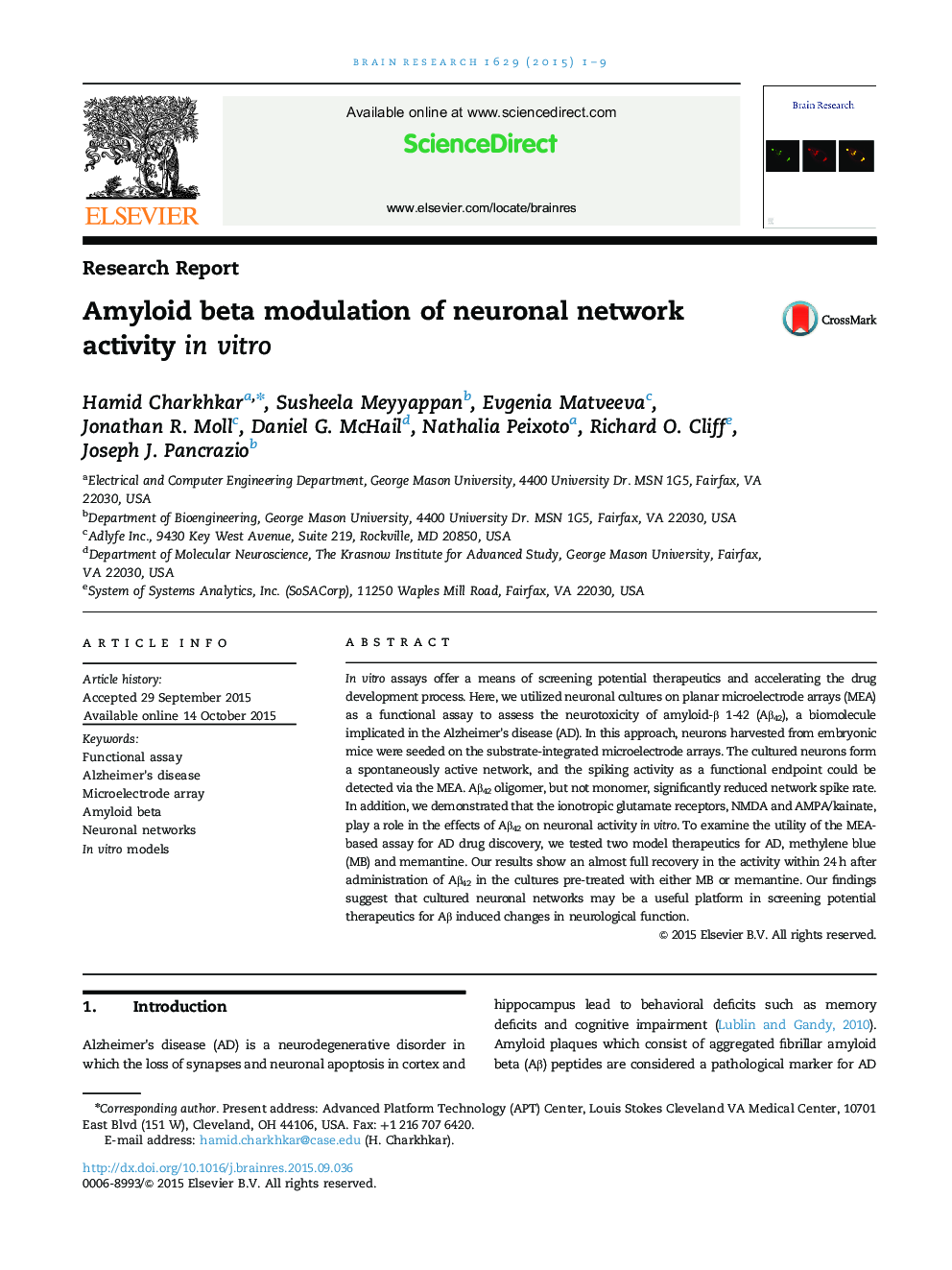| Article ID | Journal | Published Year | Pages | File Type |
|---|---|---|---|---|
| 6262778 | Brain Research | 2015 | 9 Pages |
â¢Developed a suitable functional in vitro assay for neurotoxicity & drug screening in AD research.â¢Aβ42 oligomer, but not monomer, induces changes to neuronal activity in primary cultures.â¢Ionotropic glutamate receptors, AMPA & NMDA, are both involved in the effects of Aβ42 oligomer.â¢Observed recovery in the spiking activity for cultures treated with either methylene blue or memantine.
In vitro assays offer a means of screening potential therapeutics and accelerating the drug development process. Here, we utilized neuronal cultures on planar microelectrode arrays (MEA) as a functional assay to assess the neurotoxicity of amyloid-β 1-42 (Aβ42), a biomolecule implicated in the Alzheimer׳s disease (AD). In this approach, neurons harvested from embryonic mice were seeded on the substrate-integrated microelectrode arrays. The cultured neurons form a spontaneously active network, and the spiking activity as a functional endpoint could be detected via the MEA. Aβ42 oligomer, but not monomer, significantly reduced network spike rate. In addition, we demonstrated that the ionotropic glutamate receptors, NMDA and AMPA/kainate, play a role in the effects of Aβ42 on neuronal activity in vitro. To examine the utility of the MEA-based assay for AD drug discovery, we tested two model therapeutics for AD, methylene blue (MB) and memantine. Our results show an almost full recovery in the activity within 24 h after administration of Aβ42 in the cultures pre-treated with either MB or memantine. Our findings suggest that cultured neuronal networks may be a useful platform in screening potential therapeutics for Aβ induced changes in neurological function.
